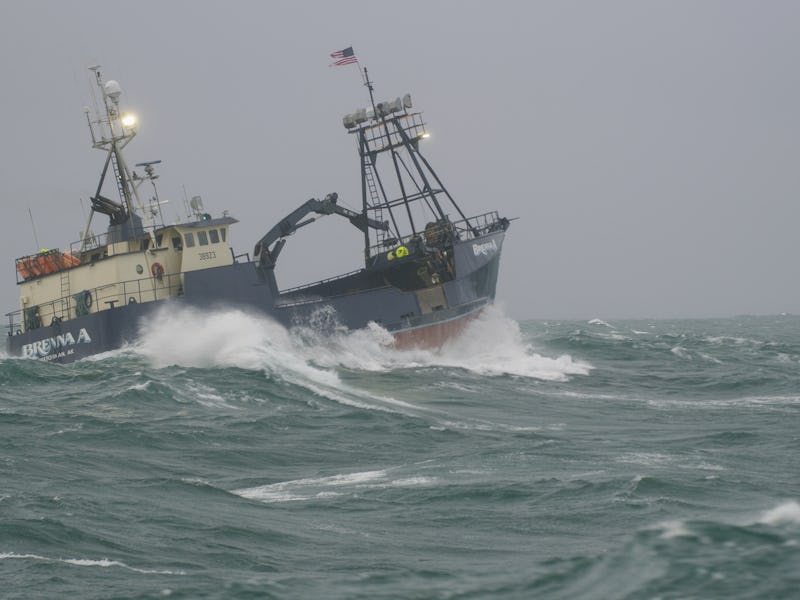'Deadliest Catch' Shows How Terrifying a Super Moon Can Be For Fishermen
“I’m bleep-ing scared bleep-less."

The next time you find yourself slurping down snow crab legs at Red Lobster, take a moment to appreciate the dangerous work that went into getting them out of the ocean and onto the Crabfest menu. As the crab catchers (and Red Lobster suppliers) on Tuesday’s episode of Deadliest Catch will reveal, the cold, roiling Bering Sea is treacherous enough under normal conditions, but when celestial events like a supermoon come into play, the ocean becomes a death trap.
The dramatic effects of a supermoon on the ocean’s waves are captured in all their terrifying glory in the new episode. In the trailer, amid shots of the massive supermoon, which glowed ominously over the Bering sea on January 31, Captain Josh Harris mutters: “Big seas, big tides. Everything’s been out of whack.”
He’s not wrong: The highly anticipated supermoon definitely sent the oceans off the rails.
Anyone who’s ever spent time by the sea knows intuitively that the difference between high and low tide changes with the phases of the moon, which in turn are determined by the position of the Earth relative to the moon and Sun. The moon’s pull on the tides depends on how close to Earth it is: When the moon is nearer to Earth, its gravitational pull is stronger, and so the difference between high and low tide is greater. But the tides are greatest when the moon lines up in a straight line with the Earth and the sun because the sun also exerts its gravitational pull, though it does so from farther way. The big difference between high and low tide that results is known as a “spring tide.”
The supermoon of January 31 represented a moment when the Earth was both aligned with the sun and the moon was at its closest point to Earth. Remember: The moon’s orbit around the Earth isn’t round but elliptical, and so it’s closer during some parts of the month than others. As the fishermen of Deadly Catch show, that unholy, relatively rare alignment exerted a huge pull on the tides, resulting in waves 30 feet high or higher.
“I’m bleep-ing scared bleep-less,” says Captain “Wild” Bill Wichrowski.
A look at the tide tables in Alaska around the appearance of the January 31 supermoon reveals a widening gap between high and low tide. On January 29, the difference between the day’s first high and low tides was 0.12 feet; on February 2 (the effects are most strong a couple of days after the supermoon), it was 2.42 feet.
The supermoon of January 2018 caused a 'perigrean spring tide.'
While the supermoon certainly looks dramatic in the sky above the Bering Sea in the Deadliest Catch trailer, it’s not actually that much bigger than usual. As Sky & Telescope senior editor J. Kelly Beatty explained to Inverse in January, “On the night of the eclipse the full moon will appear 6 percent bigger and closer than average and it will look about 11 percent brighter. That’s really not a big difference, I certainly can’t tell.”
He did add, however, that the “only difference we’ll see is that astronomically this will raise tides in the oceans that are a little bit higher than normal.”
The first supermoon episode of Deadliest Catch airs Tuesday, July 17 on the Discovery Channel.